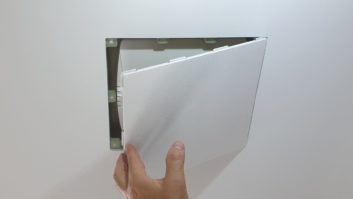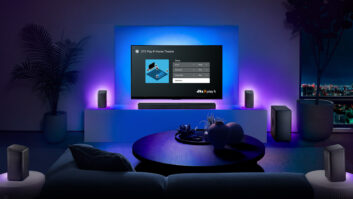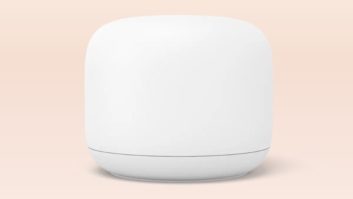Austin, Texas – The Wi-Fi
Alliance launched a testing program to certify the interoperability of IEEE
802.11n wireless-networking products, which are eligible to display the new “Wi-Fi
Certified n” logo and one of two optional tag lines depending on tested performance
levels.
The logos will also indicate whether an n-certified product
is backward compatible with devices conforming to the wireless 802.11 a, b or g
standards. All n-certified products must be compatible with at least one of the
legacy standards under alliance certification criteria.
Wireless-network products sporting the n logos will begin
appearing in stores in the coming weeks now that the IEEE has finalized the 2.4/5GHz-band
standard, said to deliver up to 10 times the datarate of 802.11g/a at up to
twice the distance. The technology enables reliable wireless-HD video
transmission simultaneously with multiple data transfers and VoIP phone calls,
the alliance said.
Roughly 700 products worldwide have already been certified
by the alliance since June 2007 as meeting the IEEE’s interim draft-n standard,
and without undergoing a retest, these products will be allowed to carry the basic
“Wi-Fi Certified n” logo without optional tag lines, said alliance executive
director Edgar Figueroa. The products can be promoted immediately on their
manufacturers’ web sites and on the alliance web site as conforming to the
final 802.11n standard, and the logo can appear on the product’s packaging and
literature as soon as logistics issues allow. A basic “Wi-Fi Certified n” logo will
appear in stores within weeks on the packaging of some draft-n products because
suppliers, aware of the coming logo change, will paste stickers bearing the new
logo over existing packaging, Figueroa said.
Beginning Sept. 30, draft-n products and new products that
pass the alliance’s new wireless-n tests will be able to display the new logo
with one of two optional tag lines – “dual stream n” or “multi-stream n” – depending
upon the maximum data rates that they could potentially deliver. The dual
stream tagline indicates a potential maximum data rate up to about 250Mbps, or up
to five times than 802.11 g/a, and the multi-stream tagline indicates a potential
maximum data rate up to 10 times faster, or around 600Mbps.
In wireless access points, dual-stream n models simultaneously
send or receive the same data in two separate (spatial) streams within the same
channel. The higher speed “multi-stream n” tagline indicates an access point offering
three or four simultaneous streams in either direction. Only multi-stream access
points with four transmit and four receive channels, however, could potentially
deliver the maximum 600Mbps in either direction.
Both taglines also indicate that a device includes three
other performance-enhancing technologies, including packet aggregation to send
more data on a packet.
Client devices will also be certified as “dual stream n” or “multi-stream
n,” but here, too, suppliers need not offer the maximum number of send and
receive channels needed to deliver the maximum data rate that each designation
could offer.
In another caveat to the logo standards, only products
operating in the 5GHz band will get dual stream or multi-stream designations.
Certified-n products can operate in the 2.4GHz band, in the 5GHz band, or in both
bands simultaneously, but maximum data rates under the dual stream and
multi-stream designations are much more likely to be achieved in the 5GHz band,
said Sarah Morris the alliance’s senior marketing manager. That’s because the 5GHz
band is less crowded and wider, enabling it to accommodate more of the optional
40MHz-wide channels that are capable of delivering the highest data rates.
To help consumers sort out these caveats, the alliance has
developed an optional matrix that can be placed on packaging and literature to
include such information as frequency bands used and number of spatial streams
supported in each band.
Companies that offer downloadable dual stream and
multi-stream upgrades for draft-n products will be able to promote the upgrades
as certified upgrades after they have been tested by the alliance.
More background on the new n standard is available at www.11nbasics.org.












